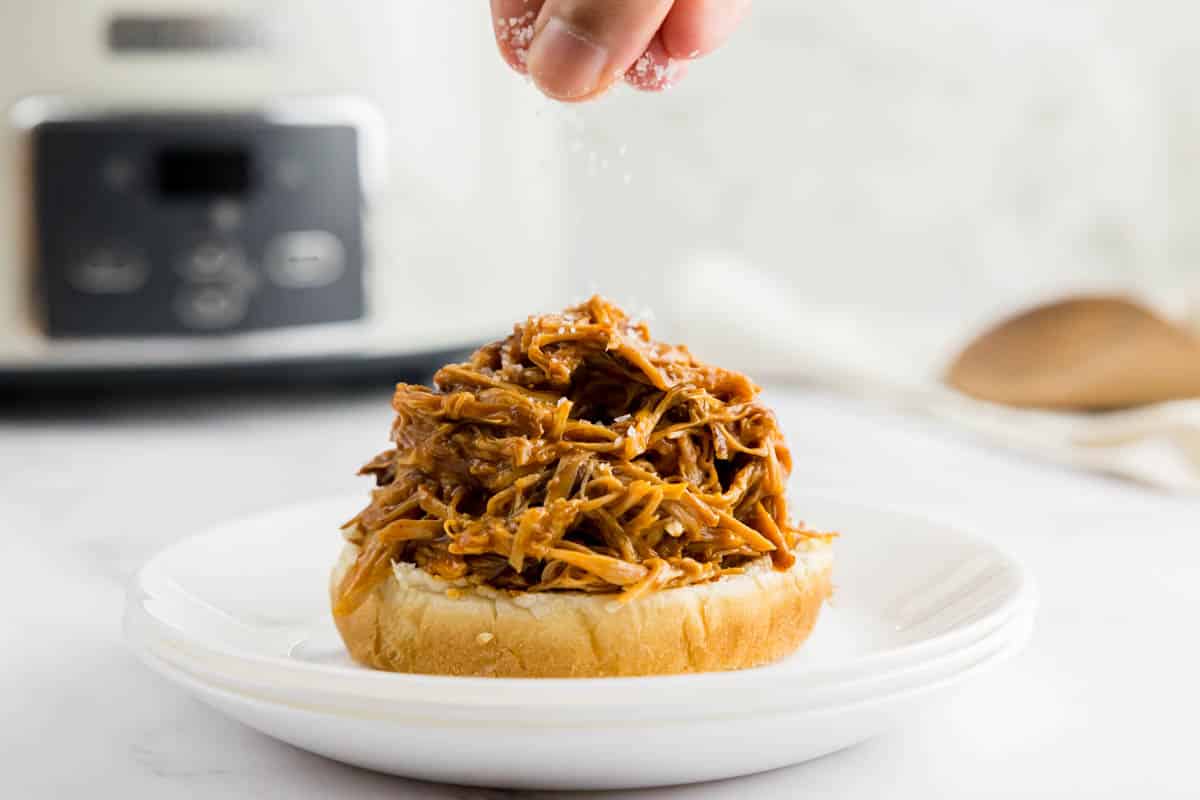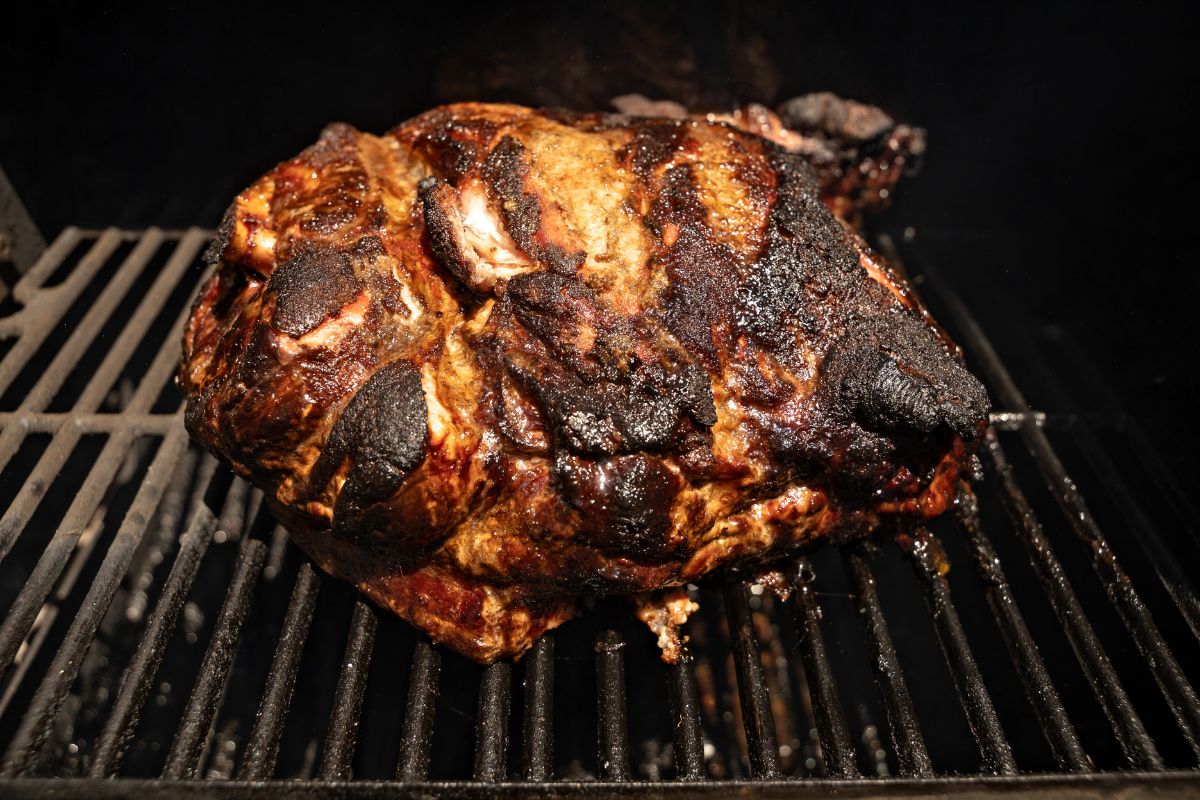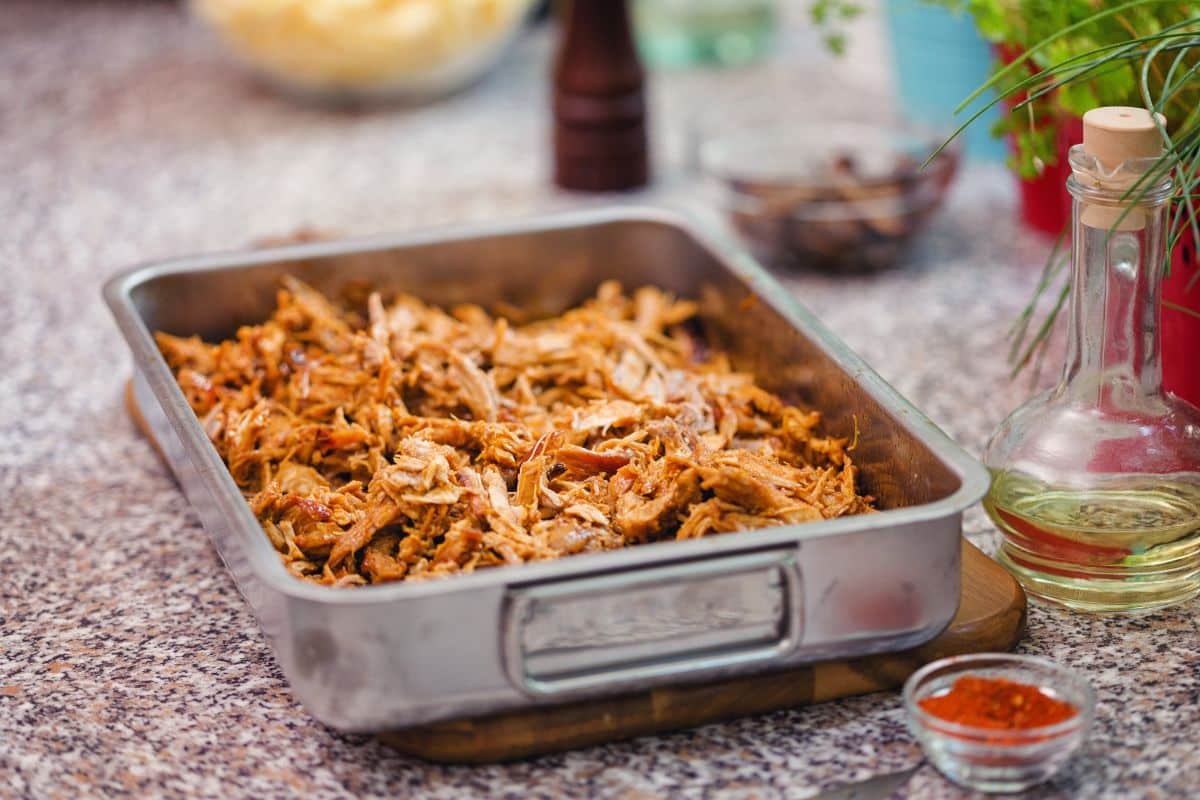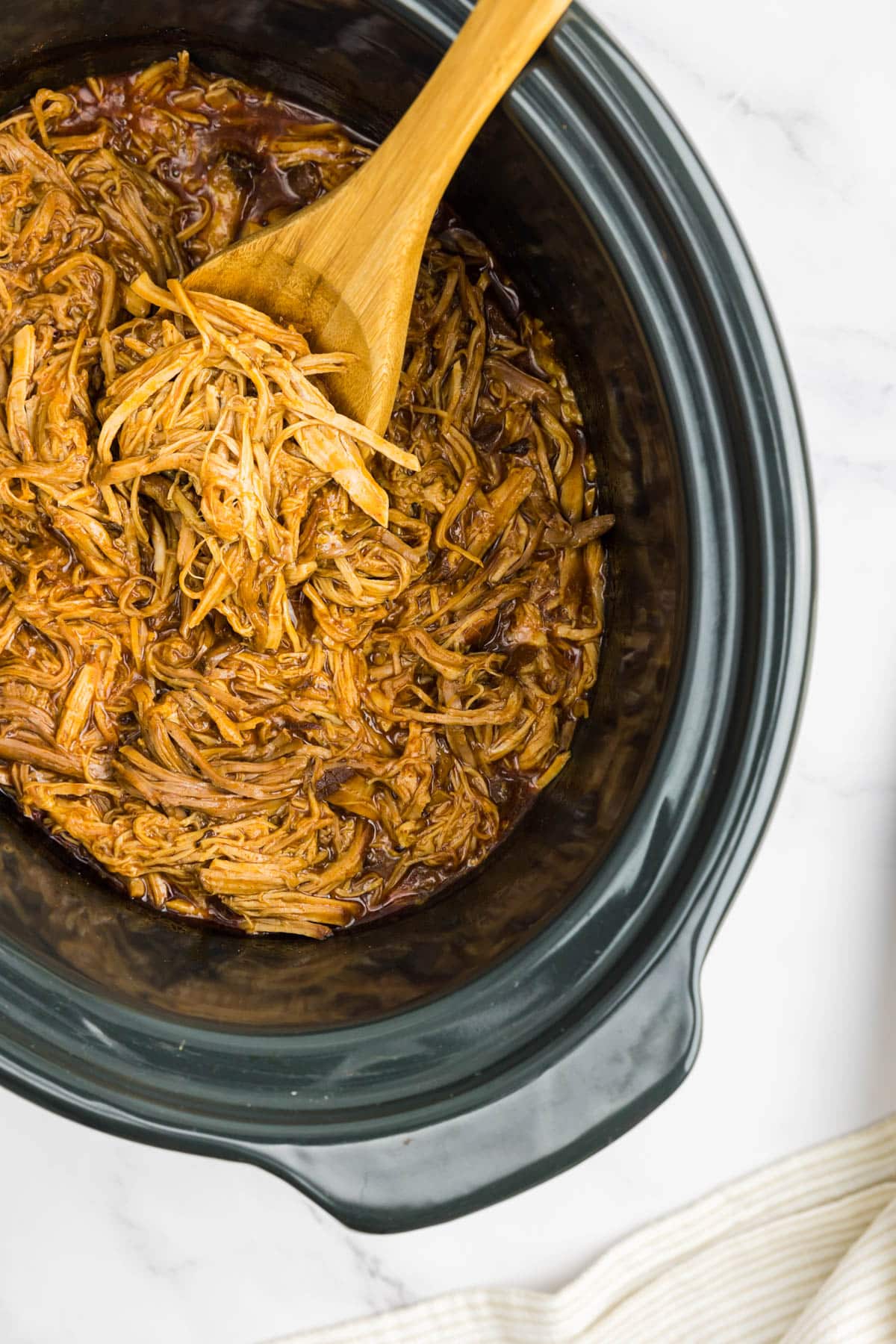Achieving that tender, flavorful pulled pork relies heavily on reaching the precise internal temperature. Miss this sweet spot, and you may encounter two unfavorable outcomes. Undercooked pork remains tough and chewy, while overcooked pork loses its texture and becomes stringy.

No matter your cooking technique—smoking, slow cooker, or instant pot—this guide is designed to help you master the perfect internal temperature for pulled pork, steering clear of both extremes.
As a seasoned chef who has spent significant time at the renowned Reds BBQ and high-end restaurants, I’ve been intimately involved in the process of making pulled pork. While working at Reds BBQ, we ranked 4th out of 252 teams in the Rodeohouston BBQ contest.
Serving more than 1500 customers a week and smoking over 1000 pork butts in total, the insights I’ve gained are invaluable.

Sometimes we even had queues going around the corner from the entrance starting about 30-60 minutes before we opened!
The Importance of the Perfect Internal Temperature
Before we dive into the specifics, let’s understand why internal temperature matters so much. The transformation of a simple pork cut into a melt-in-your-mouth delicacy is a game of temperature and time.
As the pork cooks, the internal temperature breaks down the collagen in the meat. This process changes the fibrous texture into tender, flavorful strands. Therefore, the internal temperature of the pork is crucial to achieve this.
However, this transformation doesn’t occur at just any temperature. The ideal internal temperature for pulled pork is around 195F to 203F.
Your Thermometer, Your Best Ally
To hit the bullseye of 195F-203F, a reliable meat thermometer is your best friend. Whether you’re checking the pork butt or Boston butt, regular temperature checks are key.
Remember to insert the thermometer into the thickest part of the meat without touching the bone for an accurate reading.
How Long to Rest Pulled Pork
Achieving that perfectly tender, juicy pulled pork isn’t solely about hitting the right internal temperature during cooking. The magic continues even after the heat is turned off, in a crucial stage known as resting.
During the cooking process, heat causes the muscle fibers in the pork to contract, pushing the juices towards the center. Cutting or shredding into the meat immediately after cooking would allow these flavorful juices to escape, resulting in drier pulled pork.
By resting the pork, you give it time to cool down, leading to the muscle fibers relaxing and reabsorbing the juices that were driven toward the center.
Resting time can range anywhere from 30 minutes to 2 hours. This period is critical, allowing the juices to redistribute and ensuring a flavorful, moist pulled pork.

How to Shred Pulled pork
After your pork has had time to rest, it’s time to shred. If your pulled pork is perfectly cooked and has rested appropriately, it should be tender enough to be easily pulled apart, even with a wooden spoon.
This method is what we used Reds BBQ to prevent the pork from being shredded too finely. The outcome? Meatier chunks and more textures but still incredibly tender, contributing to a satisfying mouthfeel.
However, there are other methods, like shredding claws and forks, which are also popular. These are great for creating finer strands of pulled pork.
If you’re pulled pork is cooked well, you can even use your hands but remember to wear food-safe gloves for safety and hygiene, as the pork will still be fairly hot in the center.

Navigating Temperature Across Different Cooking Techniques
Cooking pulled pork isn’t a one-size-fits-all operation; the technique you choose can significantly influence the cooking temperature and duration. Mastering these variables is key to achieving a tender, flavorful result.
- Smoker/Grill: For those who enjoy the smoky undertones of grilled meats, cooking pulled pork in a smoker or on a grill is the way to go. Aim to maintain a consistent temperature of 225-250F, which allows the meat to cook slowly and get nice and smoky. Per pound of pork, it’s approximately 90 minutes.
- Oven: If an oven is your preferred cooking method, the heat should be slightly higher—around 300F—to replicate the low-and-slow cooking style associated with traditional barbecue. Per pound of pork, it’s approximately 40 minutes.
- Slow Cooker: This method is perfect for those seeking a hands-off approach. Set your slow cooker to high and cook for an hour per pound of pork. If you have more time, you can opt for the low setting, which requires roughly two hours per pound.
- Instant Pot: Ideal for those short on time, an Instant Pot can create tender, shreddable pulled pork in significantly less time. Set your Instant Pot to high and cook your pork for about 15 minutes per pound, but remember to allow an additional 10 minutes for natural pressure release after the cooking process.

Remember, irrespective of the method, reaching the ideal internal temp for pulled pork—195F to 203F—is key. This ensures your pork is tender enough to be pulled apart yet moist and full of flavor. Your thermometer is your best friend in this endeavor, guiding you towards that perfect temp to pull pork.
Conclusion
In your journey to master the art of creating delicious pulled pork, understanding and controlling the internal temperature is key. The magic happens in that range of 195F to 203F – the perfect temp to pull pork. This temperature, be it in a pork butt or Boston butt, is what transforms a tough cut into succulent, melt-in-your-mouth strands.

But remember, the journey doesn’t end when the heat turns off. The importance of a rest period and a mindful shredding approach ensures that your pulled pork retains its moistness and character, contributing to its rich, satisfying mouthfeel.
Whether you’re using a smoker/grill, oven, slow cooker, or Instant Pot, each technique has its temperature and timing nuances to adhere to.